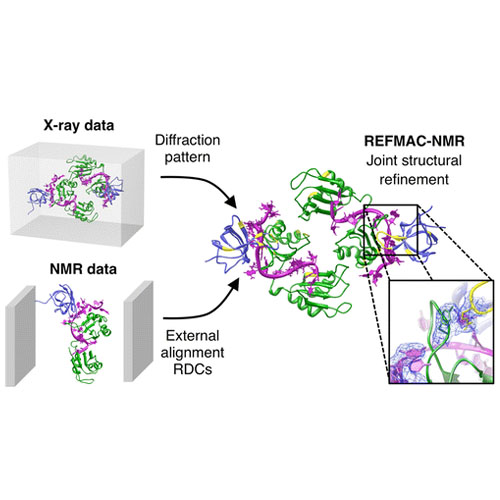Improved Accuracy from Joint X-ray and NMR Refinement of a Protein–RNA Complex Structure
13-Jan-2016
J. Am. Chem. Soc., 138 (5), pp 1601–1610, DOI: 10.1021/jacs.5b11598
Integrated experimental approaches play an increasingly important role in structural biology, taking advantage of the complementary information provided by different techniques. In particular, the combination of NMR data with X-ray diffraction patterns may provide accurate and precise information about local conformations not available from average-resolution X-ray structures alone. Here, we refined the structure of a ternary protein–protein–RNA complex comprising three domains, Sxl and Unr, bound to a single-stranded region derived in the msl2 mRNA. The joint X-ray and NMR refinement reveals that—despite the poor quality of the fit found for the original structural model—the NMR data can be largely accommodated within the uncertainty in the atom positioning (structural noise) from the primary X-ray data and that the overall domain arrangements and binding interfaces are preserved on passing from the crystalline state to the solution. The refinement highlights local conformational differences, which provide additional information on specific features of the structure. For example, conformational dynamics and heterogeneity observed at the interface between the CSD1 and the Sxl protein components in the ternary complex are revealed by the combination of NMR and crystallographic data. The joint refinement protocol offers unique opportunities to detect structural differences arising from various experimental conditions and reveals static or dynamic differences in the conformation of the biomolecule between the solution and the crystals.











